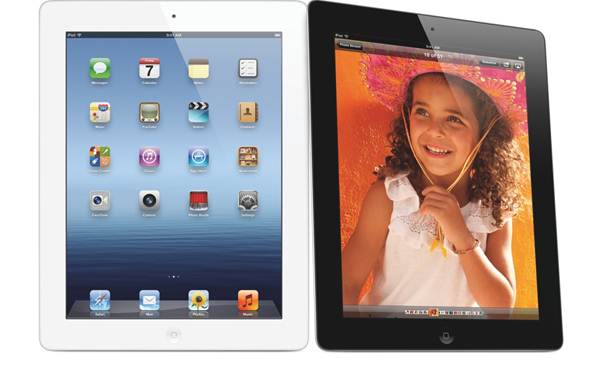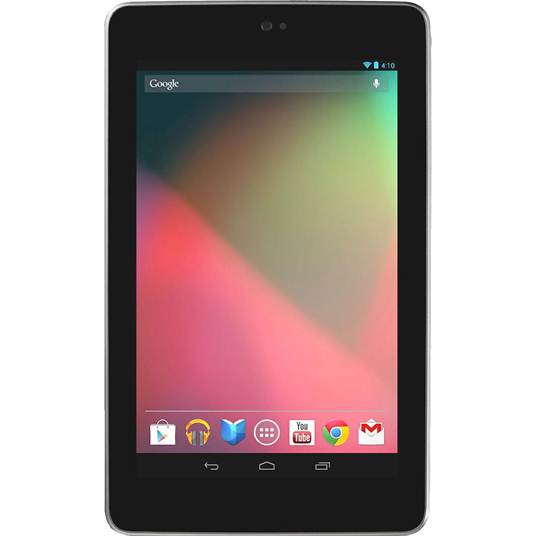Keep taking those pills. With the Surface,
Kindle Fire, iPad and iPad Mini battling for supremacy and the Google Nexus
among the others trying to muscle in, choosing which tablet to buy is proving
to be a major headache.
Apple iPad

·
9.7” screen
·
2048x1536 resolution
·
10 hours battery life
·
Wi-fi
·
HD front and back cameras
·
From $499
There have been times when Microsoft has
been seen as something of a joke. It’s sad, given the illustrious history of
this company, which has done a great deal for computers, but it appears to be
struggling to regain its edge.
This has been seen, to a large degree, in
the failure of Microsoft to come up with a tablet computer that truly captures
the imagination. It first gave it a go in 1999 when it assigned a couple of
experts from the Xerox Palo Alto Research Center to work on what became known
as the Microsoft Tablet PC. Ultimately, it was ahead of its time. Too heavy and
lacking in specific apps, consumers saw it as a gimmick.
It was not until Apple unveiled the iPad
that attitudes changed. By this point Microsoft’s Bill Gates was convinced that
netbooks were the way forward and although his opinion did not waiver (“you
know, I’m a big believer in touch and digital reading, but I still think that
some mixture of voice, the pen and a real keyboard - in other words a netbook -
will be the mainstream on that,” he said in 2010), the iPad nevertheless flew
off the shelves.
That, combined with the continued
popularity of the Kindle, the Kindle Fire’s amazing take-up in America, rumours
that Apple would make a smaller iPad, the Google Nexus and other assorted
Android tablets, ensured Microsoft could not sit it out for too long. Just as
Microsoft criticised the iPod before going on to launch the Zune, it went on to
produce a tablet of its own: the Surface.
Launched on 26th October, it retails for
between $499 and $699, which is the same price as the cheapest third-generation
iPad, putting the two firms into a head-to-head battle. Some would say such a
thing is a ridiculous. Apple’s device is established and well catered for. It
has hundreds of thousands of apps and consumers can buy it safe in the
knowledge that it has a degree off future proofing.
The Surface comes as Apple releases the
iPad Mini at a lower price. It comes as Amazon releases the Kindle Fire in the
UK. On the face of it, Microsoft looks set to be the laughing stock again: too
late, over-priced, offering a Windows interface. An old, reliable but rather
uncool gadget.
However, not everyone likes Apple. Not
everyone buys into the yearly updates and mass hysteria of a new product from
the company. It helps that the Surface is a great device. It takes a little
getting used to unless you have a Windows Phone, so it’s not as intuitive as an
iPad, but it’s of a higher spec and it has 32GB rather than the 16GB of the
iPad.
Microsoft has also been splashing out.
Although it -again rather ill-advisedly – looks to push two major products at
the very same time, combining the Surface roll-out with Windows 8, Microsoft
has spent $400m on an advertising push, and part of that shows off the unique
selling point of Surface. You can snap a keyboard to this tablet, which kind of
goes back to Gates’ conviction that netbooks are still important and giving
buyers the best of both worlds. It looks good and it feels fine. The war is
very much on.
When Microsoft unveiled the Surface in
June, it was to a great reception. There were no guffaws, little criticism and
the positive comments came in droves. People liked the fact the iPad had a
rubber cover that doubles as a keyboard and they liked the fact the iPad had a
rival that, on the face of it, is better equipped than the BlackBerry Playbook
and goes way over what the Kindle Fire and Google Nexus offer.
Google Nexus

·
7” screen
·
1280x800 display
·
10 hour battery life
·
From $199
·
Wi-Fi
·
HD Front facing camera
According to Microsoft chief executive
Steve Ballmer, the Surface is an entertainment device in the mould of the iPad,
but it is unashamedly aimed at people who also don’t want to give up the
full-service capabilities of their PCs, such as word processing and business
tools like Microsoft Office. To that end, it’s pitched not against the iPad
Mini, the Nexus, the Kindle Fire and all the other smaller tablets but at the
big daddy of them all.
It’s also a bold move for Microsoft which,
after 37 years of operation, has gone all out and produced its own computer
rather than let a third party like Dell do that side of the business. Gone are
the days when Microsoft concentrates purely on the software. Like the Xbox 360
and the likes of Zune before it, it is trying to match Apple by controlling
more of the end product. It’s a lesson learned that will stand it in better
stead in the future.
In June, Francisco Jeronimo, mobile devices
research manager at market research firm IDC, said, “The main focus has been on
the hardware and specs only. I was expecting to hear from Microsoft about how
the Surface delivers an integrated experience with the PC, what additional
services or features are available and how the Microsoft ecosystem is growing
to be a real alternative to the iPad and Android tablets.”
We have heard little since then about why
we should go for the Surface. Microsoft has to explain why this device will
change people’s experience with a tablet. Sure it has a USB port and it has a
snap-on cover that doubles as a keyboard and that gets over the RSI tendencies
and lack of connectivity of the iPad, but will it be enough? Will the Surface,
far from being a rival to the iPad, actually go head-to-head against laptops?
Probably not. People who want a laptop will buy a laptop and those who want a
tablet will buy a tablet. The Surface is a half-way house in this respect.
So we come to the crux of things. There are
four new products - the Surface, Kindle Fire, fourth-generation iPad and iPad
Mini - and much dust will be thrown before things begin to settle down. The
iPad’s refresh with its new Lightning connector and better processor has thrown
Microsoft a bit of curve ball, but this isn’t purely the Redmond giant’s
battle. Everyone is wanting a slice of a pie baked by Apple and they’ll
continue to cook up new specs until they achieve it.
The fact is people want something of
quality. The Kindle Fire has impacted on the market, but it cannot be said with
100% conviction that it has eaten away at sales of the iPad and neither has the
Nexus dented them too much. The fact Apple has produced a smaller version of
its popular device shows that these tinier tablets are having an effect, but
given the price of the iPad and the market share it has, people are not shying
away, even in a time of recession, from making luxury purchases.
Microsoft’s Surface will therefore be
entering a market that should not be beyond it. The main problem it will face,
however, is that of marketing. It will be very difficult for Microsoft to get
over the message that people should choose a Surface over the iPad. It needs to
explain the consumer experience, and the way Apple has done that is by leaping
off the back of the popular iPhone and by allowing consumers the chance to play
around with their devices in cool and modern stores.